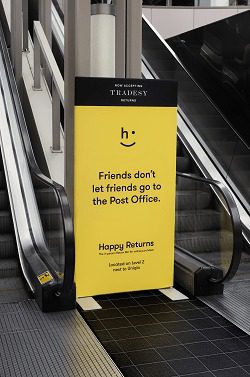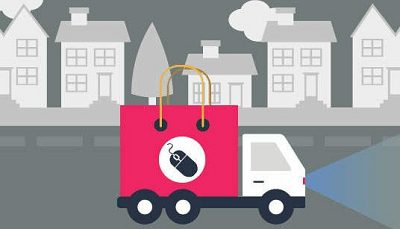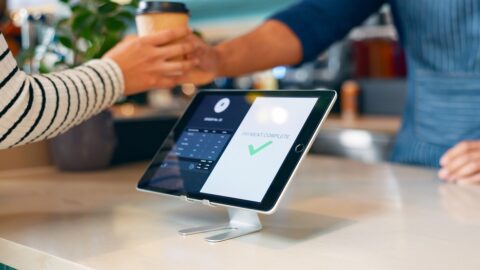The “last mile” of retail — fulfillment, delivery, returns and post-purchase services — has become the latest competitive arena for winning sales and customer loyalty. If retailers fail to meet customer expectations with a delivery or product installation, it’s highly unlikely that shoppers will give them a second chance.
But while retailers are competing for customer loyalty, they are faced with rising costs around deliveries as well as returns, another critical element of the last mile. And passing these costs along to customers is not an option. Today’s consumers expect free or low-cost shipping.
When done right, however, the last mile is a tremendous opportunity for retailers. It’s a chance to establish personal customer connections, which is particularly important to pure-play retailers or those with a small store footprint. Additionally, retailers that treat the last mile as a data collection opportunity can gain valuable insights about their customers’ preferences, their reactions to products, potential problems and promising areas for future growth.
Advertisement
This Retail TouchPoints feature will explore:
• Cost Controls: The challenges faced by Walmart, L.L. Bean and others in keeping last-mile costs in check as they compete with Amazon;
• Disruptor Partnerships: How retailers are partnering with disruptors like Uber and Deliv;
• Cutting-Edge Technologies: Expanding roles for technologies including drones, robots and the IoT;
• Returns Management: New models that address consumer concerns; and
• Analytics: Leveraging data to turn the last mile into an opportunity to gather valuable insights.
Amazon Has A Last Mile Head Start
There’s no question that Amazon is a driving force behind last mile competition across the entire retail industry. Amazon’s ability to deliver items quickly (even via drone) has raised the bar for other retailers, so much so that its own Fulfillment Services division is now handling more than two billion packages annually for third-party marketplace sellers. Amazon also is moving into post-purchase services, testing its own version of a Best Buy-style Geek Squad with Smart Home Consultations that include WiFi assessments, in-home demos of smart home products, and installation, setup and troubleshooting of devices.
It’s no wonder Amazon continuously innovates around its last mile capabilities. Consumers place a high value on factors such as on-time deliveries, clear communications and streamlined returns process, according to a recent survey of 1,000 U.S. adults conducted by Narvar. Additional results revealed that:
• On-time arrivals motivate repeat purchases for 72% of consumers;
• 70% say an easy return or exchange is likely to make them a repeat customer;
• 60% are more likely to choose a retailer that provides the exact date of delivery at the time of order;
• 42% don’t trust that the package will arrive on time, and 49% worry about the package being damaged while in transit — more than any other post-purchase worry.
Balancing Consumer Expectations And Cost
It’s obvious that consumers care deeply about last-mile performance. Retailers’ quandary is that meeting shopper expectations in this area is both costly and fraught with complexity.
“The last mile touches the customer, and it’s also often the most expensive part of fulfillment,” said Jason Searcy, Senior Manager in the Supply Chain Technologies Practice at Capgemini in an interview with Retail TouchPoints. In the 2016 Capgemini report, titled: Making The Last Mile Pay, Searcy and his co-authors gave the example of online food orders costing “around $20 to fulfill — roughly three times the maximum delivery charges supermarkets can acceptably pass on to the customer.”
Cost concerns aren’t limited to the grocery sector, which has to deal with perishable items and a large number of non-standardized products. L.L. Bean, for example, is considering scaling back its generous shipping and returns policies as a cost-cutting measure.
Retailers’ attempts to turn this paradigm around — by bundling free shipping with a subscription fee that serves as an ongoing revenue stream — have so far stumbled in the face of the most successful version of this deal, Amazon Prime. Walmart cancelled its ShippingPass program only seven months after its debut, and will now offer two-day shipping with a minimum purchase of $35. Without the additional membership benefits of Amazon Prime, such as access to its TV shows and other perks, even the mighty Walmart had to call a retreat.
Yet Amazon isn’t immune to the impact of rising last-mile costs. Its shipping costs hit $7.2 billion in 2016, a 40% increase over the $5 billion the company spent on shipping the previous year.
Disruptors Drive Last Mile Innovation
The growing importance of the last mile has attracted the attention of innovative companies, including sharing economy models such as Uber and Deliv. “Deliv differentiates its last-mile solution by giving customers the flexibility to schedule delivery at their convenience (instead of what suits the courier firm) for a compelling fee of $5,” according to the Capgemini report. “It partners with retailers, drawing on their infrastructure (e.g. stores and warehouses) and, through their network of independent contractors, enables same-day delivery. Among others, Macy’s has partnered with Deliv to extend same-day delivery to 17 cities in the U.S.”
Pure-play retailers are partnering with sharing economy companies to cost-effectively extend their reach into the physical world. For example, Google Shopping Express partners with Uber for same-day deliveries, with Google maintaining pricing, the storefront and merchant partnerships, while Uber provides the drivers through its UberRUSH offering. Partnerships are even adding new delivery points. In Germany, DHL Parcel has joined with Amazon and Audi to enable items to be quickly and securely delivered to customers’ cars.
Some of these disruptive solutions show promise, but it’s unclear whether they will be able to scale up to meet retailers’ growing needs. “Crowdsourcing options can improve labor costs, but it’s also possible for retailers to look to other organizations to address the labor cost barrier,” said Searcy. Additionally, brands may be reluctant to outsource their opportunity to connect with customers, particularly to a network of independent contractors.
Will Robotics Revamp The Last Mile?
As for taking human beings out of the last mile equation entirely, the general consensus seems to be “not yet.” Starship Technologies is piloting robot deliveries in Redwood City, Calif. and Washington, D.C. in February 2017, testing the use of ground robots for deliveries of under one mile. The robots’ top speeds approximately equal those of a pedestrian, making them impractical for longer trips.
Drones are an increasingly popular technology, and as noted Amazon has already taken a flyer on drone deliveries. Gartner predicts that global market revenue for drones will increase 34% this year, reaching more than $6 billion in 2017 and growing to more than $11.2 billion by 2020. However, much of the growth is being driven by personal-use drones rather than commercial drones, which are capable of longer flights, carry larger payloads, and are equipped with redundant sensors and flight controllers to make them safer.
Drones for delivery will amount to less than one percent of the commercial market by 2020, according to Gerald Van Hoy, Senior Research Analyst at Gartner. Their ROI has not been proven in regard to the cost of the drone, operational costs and a single customer delivery. “Delivery drones will be mired in logistical issues like the time needed to return a drone to its origin point after delivery,” said Van Hoy in a statement. “We expect that delivery drones will begin finding a niche in business-to-business applications first, particularly for internal services within one company where logistics will not be such a big factor.”
A more promising technology for increasing last mile efficiency is the Internet of Things (IoT). “As the cost of sensors continues to decrease, the number of connected devices will increase,” said Searcy. Equipping delivery trucks, products and/or their packaging, and potentially integrating them with recipients’ smart home devices creates new data collection opportunities for logistics companies and retailers.
“It will help manage capacity, whether we’re talking about crowdsourced solutions or standard delivery,” said Searcy. Trucks often travel with lots of empty storage space, slowing delivery times and wasting fuel. “As more devices are connected and there’s real-time access into those capacities, retailers will be better able to manage this,” he added. “They can add stops, returns or pickups ‘on the fly.’ The IoT and connected devices creating this web of information will be one of its most impactful areas.”
The Last Mile Is A Two-Way Street: Returns Matter
One of the knottiest challenges around the last mile is how to handle product returns. With the rise of e-Commerce, both return rates and overall return volumes have grown tremendously. According to UPS, on January 5, 2017, “National Returns Day,” 1.3 million packages were shipped back to U.S. retailers; 5.8 million packages were returned during the first full week of January. In 2016, 44% of consumers returned an online purchase.
Returns generate costs beyond shipping. Retailers need to determine if the item can be resold, and if so, reintegrate it into active inventory. Customers need to be reimbursed, either with a refund, store credit or another item if the return was due to a defective product. Retailers also need to guard against returns fraud, so there are loss prevention costs.
 Returns challenges can be particularly acute for pure-play retailers that lack a physical point of contact with customers. The startup company Happy Returns is attempting to relieve returns pain points for both shoppers and retailers. Since April 2016, the company has opened seven “Return Bars” in malls in Los Angeles, San Francisco, Chicago, Washington, D.C. and Houston, Texas. At these bars, staffed by “returnistas,” shoppers can return items purchased from four e-Commerce retailers: Tradesy, Eloquii, Everlane and Shoes of Prey. Happy Returns collects a per-return fee and handles the customer interaction and shipping the item back to the retailers.
Returns challenges can be particularly acute for pure-play retailers that lack a physical point of contact with customers. The startup company Happy Returns is attempting to relieve returns pain points for both shoppers and retailers. Since April 2016, the company has opened seven “Return Bars” in malls in Los Angeles, San Francisco, Chicago, Washington, D.C. and Houston, Texas. At these bars, staffed by “returnistas,” shoppers can return items purchased from four e-Commerce retailers: Tradesy, Eloquii, Everlane and Shoes of Prey. Happy Returns collects a per-return fee and handles the customer interaction and shipping the item back to the retailers.
“We believe that returns are limiting the growth of e-Commerce today, because returning items via mail is a process consumers don’t like,” said David Sobie, Happy Returns Co-Founder and CEO in an interview with Retail TouchPoints. Sobie and co-founder Mark Geller, veterans of the flash sale site Haute Look and Nordstrom, used focus groups and other research to identify the three biggest returns pain points for consumers:
- Delays in getting their money back;
- Inconsistencies in returns processes: Some e-Tailers provide a return label with packages, others require customers to contact the customer service department, and carriers can range from the USPS to FedEx, UPS or others; and
- The “arts and crafts” aspect of doing returns: boxing up the item, sealing it and mailing it back.
On the retailers’ side, returns also are a big problem, said Sobie: “If you talk to online retailers selling apparel, shoes and accessories, their return rates can run 30% to 40%. That means one in three items going out the door is coming back. Additionally, consumers expect retailers to shoulder the cost, but shipping rates are only going up. There are not really good solutions to giving customers what they want without building a store network.”
The Return Bars provide a network of physical locations where online shoppers can return items in person. Retailers essentially outsource a portion of their returns issues and gain economies of scale. “We aggregate the returned items before sending them back, so instead of the retailer handling 10 one-pound boxes from 10 customers, they’re getting one 10-pound box from us,” said Sobie. “They’re saving money on return shipping and also dealing with fewer calls into their customer support line.”
Making returns a more positive experience for customers is essential in today’s highly competitive retail environment. “A return means that something didn’t work for the customer, so our challenge is, how can we ensure that the customer has a great experience with their return?” said Sobie. “That way the retailer can retain the customer and ensure they come back again.”
Data Shortens The Last Mile
Smart use of data is critical to winning the last mile. In the returns area, for example, if a retailer discovers that a product is consistently returned because of sizing issues, it’s possible the item has not been manufactured to the correct parameters. Similarly, consistent reports of installation issues can pinpoint problems, either with the product itself or the people doing the installing.
Retailers and their fulfillment partners also need to be data-driven with their last mile operations. Aeropost, which manages fulfillment and deliveries for multiple retailers in countries across Latin America, has been in the last mile business for three decades. The company operates storefronts that serve as both online shopping locations and click-and-collect pickup spots. “In some of the countries we operate in, customers are not expecting to receive — or they don’t want to receive — packages at home,” explained Nicolas Maslowski, CMO. “There might be security reasons, or they might want to open the package with someone on our team supervising the process, to assure themselves that there will be no problems with the item.”
Aeropost measures its performance with a number of metrics. Customer satisfaction surveys are one; another is the number of customers calling into its customer service department. “We want the least number of customers contacting us, because them getting in touch means we either screwed something up or we’re not being clear enough in our communications,” said Maslowski.
Operationally, the company breaks up all of its fulfillment processes into “as many pieces as possible, because the more you break it up and measure all the steps, the closer you get to accountability from everyone in the chain,” he added.
Conclusion
The stakes for last mile success are already high, and they are likely to get even higher. Retailers will need to figure out ways to meet customer expectations around delivery, services and returns without eating into their own profit margins. Partnering with innovative companies is one potential solution, and investigating new technologies that fit into real-world business use cases is another. All retailers will need to pay close attention to data collection and analysis related to the last mile, both to gain valuable customer insights and to keep these vital operations running smoothly.









